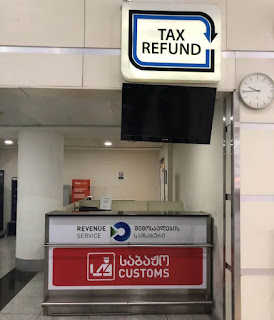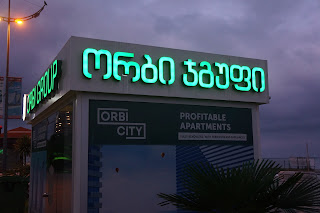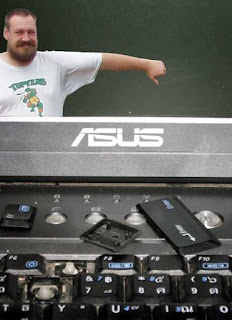USA Without Car: Travel Information And Tips
How to travel across the US from coast to coast and north to south without a car?
We landed in New York, slept the first night in JFK airport, and travelled from east to west and north to south by bus. On the way we were pet-sitting in Cincinnati and Seattle and visited friends in Syracuse and San José before exiting to Mexico. Our journey proved that it is not only possible but also easy and comfortable to travel in the US without renting a car, taking a train, or flying.
Greenhills, Ohio
Our first pet-sit was in Greenhills near Cincinnati, Ohio where we took care of a big nine-year-old mixed-breed dog Toby. Toby was a great companion for our 5–10 miles (7–15 km) walks. Apparently, such walks are not common in the US as dogs are usually just let out to piss and poop in the backyard. Sometimes sheriffs slowed down to stare what we were doing. To put things into perspective, in Greenhills kids were taken by bus to school that was just 1 mile (1.5 km) away.
In many highways, walking is strictly prohibited and sidewalks are rare. The country is heavily subsidizing fuel prices making driving and transporting goods inexpensive. The downside is increased air pollution, piles of road kills on roadsides, and heavily overweight nation suffering from all kinds of diseases due to lack of physical exercise. Sometimes it felt as if the country was run by car manufacturers who have outlawed walking to promote their businesses. One gallon of gasoline costs US $3.5–4 (0.7–0.8 €/liter). Everything is designed for driving: there are even drive-in ATMs, pharmacies, restaurants and shops where you don´t have to bother to get out of the car in order to get what you want. In many places there was a special lane for car pools and buses. It is reserved for cars with more than one person inside. Usually those lanes were empty while all the other lanes were crowded.
Greenhills was enjoyable. It is one of the four green belt areas that were established by the federal government during the Great Depression in the 1930s. There are both townhouses and ranches and big green areas everywhere with old trees and squirrels running around. The area resembles the garden city of Tapiola in Finland, which probably got its inspiration from the US. The weather in Ohio in July-August is nice, hot and humid, and crickets were chirping all night long.
Going Greyhound
From Cincinnati we took a 2,5 day bus ride to Seattle via Chicago, Minneapolis, Fargo, Billings, Butte, and Missoula. The scenery was flat and monotonous until we came to Montana and Rocky Mountains. We travelled by Greyhound buses that cover the whole country. The tickets can be bought online and there is an advance discount for tickets purchased 21 days beforehand. Usually the longer the journey, the cheaper the tickets are. The whole 2344 miles (3800 km) trip from Cincinnati to Seattle was US $150 each but if we had stopped on the way, the price would have almost doubled. When we compared prices, AmTrak trains were the most expensive option. Flying with budget companies was a bit cheaper, then came renting a car and riding a bus. Not all the bus trips sold by Greyhound are theirs. There might also be some other operators providing the service with less services and crampier seats.
Seat selection is done on a first-come, first-served basis so it is a good idea to be in terminal well in advance. All buses have a toilet in the back, and often also electric plugs and a wifi. Toilet we didn´t actually test. When Santeri was going there, our fellow co-passengers offered him a bottle of perfume and asked to spray the stinky and filthy toilet before going in. Santeri cancelled his mission and waited for the next stop. The buses stop frequently in Greyhound terminals, at least every two hours as most of the passengers are smoking addicts and it is prohibited in the bus. Almost all of the terminals we visited were clean and they all had free toilets, wifi, and a fountain for drinking water.
Most of the buses we took were half empty so we had plenty of space to sleep, sometimes the whole row. There are strict rules not always followed forbidding people from listening to music or talking too loud at night which makes sleeping onboard easier. The drivers give announcements informing the passengers where the bus will stop and for how long, which is nice. In India, buses hardly stopped at all and whenever they did, there were no toilets available.
People we met onboard were friendly and chatty, and we heard all kinds of stories. One man was boasting that he had three wives in three different states, while another was bragging about owning five-million-dollar movie rights. She also knew that Hitler never committed suicide in Germany, but lived in the northern USA. A fairly common topic was work, or more precisely the lack of it. One guy behind us was calling his friends and family to tell about his imaginary new job. The starting time, job description and the salary changed drastically from one phone call to another.
All in all, Greyhound was a pleasant experience for us except the last hassle in the border crossing from USA to Mexico. The driver didn't stop at the immigration so we got to Tijuana without any exit or entry stamps. Otherwise the only downside with Greyhound was that buses are sometimes late. This happened to us once, but fortunately the connecting bus was waiting for us despite the two-hour delay. Not everyone were as lucky as we. Some passengers had to wait twelve hours for the next connection.
Seattle, Washington
In Seattle we were pet-sitting two lovely and furry cats, Matan and Sinclair, who kept us great company. Matan liked to sit on Santeri´s chest while he was playing a computer game and Sinclair woke us up by jumping into our bed 4am in the morning to get some cuddling and food.
We were staying downtown Seattle by the waterfront, which was an awesome place for jogging. During the beautiful sunny days, which were surprisingly many considering it was already September, the pathway was almost crowded with joggers which restored our hope for the Americans. Not everybody is a couch potato. Seattle is small enough to be walkable. Besides waterfront, we explored the Capitol Hill and Chinatown which had great grocery stores with Asian fruits and vegetables.
The prices in the US are very affordable compared to Europe and not only because of the current favorable currency exchange rate. Also the lower transportation costs and the big home market helps to keep prices at a reasonable level. The selection in grocery stores is great. We don´t usually advertise any stores or brands but this we have to mention: Jungle Jim´s in Ohio. It is just about the greatest grocery store where we have ever been. There were shelves for different countries and we could find almost everything we could think of there. The only thing we missed in the US was European style bakeries instead of sandwich bars with ready made sandwiches. What we also didn't like so much was the great amount of GMO products, especially corn and soy in stores, and some vegetables and fruits just seemed to last forever in the fridge which made us wonder how they were produced.
Crossing from USA to Mexico in the San Ysidro-Tijuana border
From Seattle we continued southwards, first to San Francisco and San José where we stayed with a friend. The weather was superb and we had again an opportunity to enjoy the company of a dog, this time a pure-bred Finnish spitz Foxy.
We left the country from Los Angeles and headed to Tijuana, Mexico. That border turned out to be a bigger-than-life hassle when crossing it from USA to Mexico by bus. Nobody knew how it should be done and everybody refused to give any exact instructions. The first time we went through we just put our backpacks through x-ray machine and that was it. Nobody looked at our passports or even stamped them. In Tijuana bus station in Mexico we then learned that we should have have bought a tourist card costing some US $25/person, and that in the US side they should have stamped us out. The Greyhound bus driver had instructed us poorly so he assumed responsibility and arranged us a free ride back and forth across the border.
Getting back to the US was somewhat complicated as the border guard could not find the entry stamp from our passports. He had to call his boss for help. Finally they spotted the stamps and we got back to the US only to learn that they don't have a thing called exit stamp. They give exit stamps only in airports, not in land crossings. The border guards instruction about “swiping” our passport on the way out was also rubbish. They don't record anyone leaving according to the customs officer who was in charge.
So, here is how to do it in a correct way. Don't worry about the US side as your bus will not even stop on that side of the border. When you get to Mexico and enter the border building, first turn right to a small immigration cubicle, get the tourist card, fill it, go to bank around the corner, pay it, return to the immigration, and they will give you the entry stamp. With a EU passport, they will give you half a year, 180 days. Then proceed to customs and after that to your bus, which should be waiting for you outside in front of the office building. If you fly in, the tourist card price is included in your flight price.
We travelled in the US with an ESTA licence. For the sake of reciprocity, other countries should start insisting US citizens also to pay an extra imaginary fee equaling to ESTA (US $14), and Mexicans the same amount that the tourist card costs (US $25).
Tips for bus passengers and US visitors
- In a bus terminal put your bag to the queue in front of the gate right after you get your gate number.
- People who get to the bus among the first have a chance of occupying double seats.
- If you are among the last, you will usually have to beg for a seat.
- Take care of your luggage by yourself, look after it and move it from one bus to another when changing buses. The most common complaint among passengers is lost luggage.
- If you are in a Greyhound terminal for transit, you will be allowed to board first to the connecting bus.
- If your diet is not American, based on fat and sugar, make yourself a lunch box for the bus trip as the buses stop only at junk food joints.
- Other passengers advised us that if buses run late and passengers miss their connections, at least women have a chance of getting a free accommodation for the night.
- For inexpensive vegan food ingredients, head to Chinatown grocery stores. Food is in general cheaper in the south.
- JFK and bus terminals were OK to sleep. You just need to have an onward ticket to be able to sleep there. We slept a few times in bus terminals.
- You can save tips if you don´t use restaurants, taxis, and other services.
- Don´t count on hospitality exchange in the US. It didn´t work at all. Instead, pet-sitting and house-sitting worked well, at least for us.
- If you need an exit ticket when entering the country for the immigration, the cheapest option is to buy a Greyhound ticket from San Diego to Tijuana.









Comments